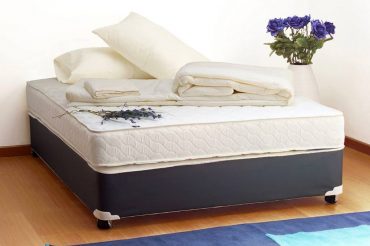 Sleep is a hot topic these days, as demonstrated by the popularity of books such as Arianna Huffington’s “The Sleep Revolution,” topping bestseller lists throughout the United States.
Sleep is a hot topic these days, as demonstrated by the popularity of books such as Arianna Huffington’s “The Sleep Revolution,” topping bestseller lists throughout the United States.
Many sleep experts agree that a good night’s sleep starts from the bottom up with a good mattress, but with the range of choices available, finding the right mattress can seem more daunting than buying an automobile. This checklist can help you navigate the road to a better night’s sleep:
Find a reputable dealer.
Ask family and friends for referrals. If you don’t feel your salesperson is knowledgeable or helpful, take a trip to another store.
Many consumers are buying mattresses online — and there’s even a trend toward buying a mattress in a compressed state, so it fits in a box for easier shipping and carrying. If you take this route, be sure to read reviews, check return and shipping policies, and be certain you can reach customer support should a problem arise.
Test-drive various models.
Like cars, mattress engineering has come a long way and there is a huge variation of “feels” among innerspring, foam, gel, pillow top, airbeds, adjustables and hybrids.
It’s a good idea to lie down and try different types to determine what is most comfortable to you. Be sure to wear comfortable clothes and shoes you can easily slip off.
Size matters.
Will you be sharing the bed? If so, consider a queen or king mattress. A healthy person moves 40 to 60 times a night and makes lots of full-body turns. A larger mattress gives you the freedom of motion you both need for a sound sleep.
These dimensions will come in handy (in inches):
- Twin: 38 by 75
- Twin XL: 39 by 80
- Full: 53 by 75
- Full XL: 54 by 80
- Queen: 60 by 80
- King: 76 by 80
- California king: 72 by 84
Be sure it contains certified foam.
Consumers who care about what’s in the products they bring into their home are increasingly demanding that the foam in their mattresses and upholstered furniture be certified through the CertiPUR-US® program, a foam-certification program administered by a nonprofit organization.
This is a good way to be sure the foam in your mattress was made without formaldehyde; PBDEs, TDCPP or TCEP (“Tris”) flame retardants; mercury, lead or heavy metals; phthalates regulated by the Consumer Product Safety Commission; and has been tested to have low-VOC (volatile organic compound) emissions for indoor air quality.
Companies offering products containing certified foam can be found at www.certipur.us.
When you consider that we spend about one third of our lives in bed — and the quality of that time affects our waking hours as well — it makes sense to invest the time in choosing the right mattress.























